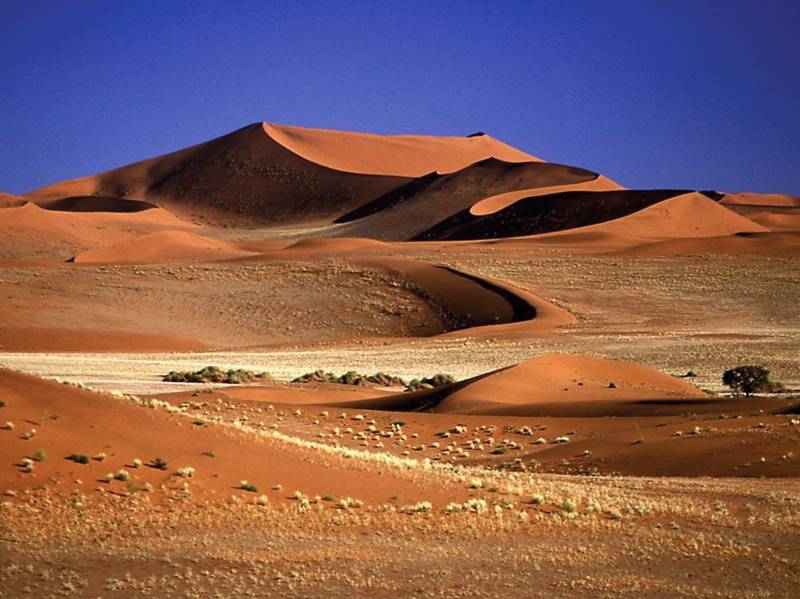
The dunes are like a gigantic beach, and spark a curious question: where does all that sand come from ?
The shifting, dancing sand is a product of both weathering and erosion, originating mostly from the South African hinterland, which are transported to the Atlantic Ocean via the Orange River.

The north-flowing Benguela current then returns the sediment by the powerful ceaseless waves crashing onto Namibia's Diamond Coast.
There it is dried and further thrown inland by the ubiquitous southwesterly winds.
Like other minerals, the desert sand slowly begins to oxidize.
The tiny quartz particles beginning pale, carry iron particles that very, very slowly begin to oxidize.
The coloration begins to change, and the oldest of the dunes turn to deeper shades of red; red with rust.

http://magicnamibia.blogspot.com
http://magicbotswana.blogspot.com
http://magicsouthafrica.blogspot.com
http://magicmadagascar.blogspot.com
http://magicmozambique.blogspot.com
http://magiadinamibia.blogspot.com
http://vagabondoinafrica.blogspot.com
















